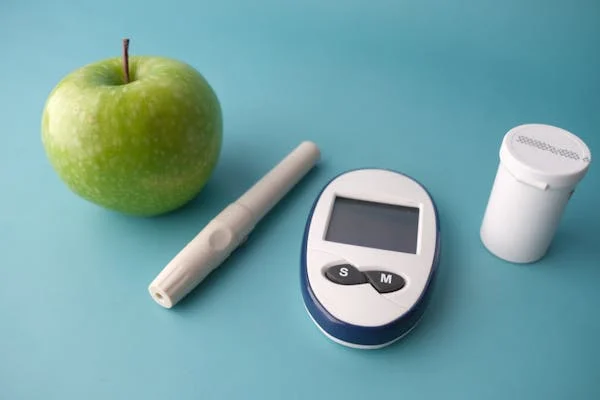Know the best time to exercise to control blood sugar
All exercise is great assuming you have diabetes, however here’s the point at which it might help the most.
exercising exercise, along with dietary changes and medication if necessary, is typically prescribed to people with type 2 diabetes as one of the best defenses against diabetes. Physical activity improves insulin sensitivity and helps keep blood sugar in check.
So, is there a good time to exercise when it will be most beneficial? Furthermore, is there a specific sort of activity that is better at taking care of business?
It just so happens, any sort of activity whenever of day helps with the administration of type 2 diabetes. However, a recent study that was published in the American Journal of Medicine suggests that engaging in physical activity later in the day, particularly after meals,
may be more effective at lowering blood glucose levels and increasing insulin sensitivity. Exercise following a meal has also been shown in a number of other studies to be a great way to control spikes in blood sugar that occur after eating.
Consider engaging in some physical activity later in the day, whenever it is most convenient for you, even if you are unable to fit in a workout after dinner. The most important thing is to find time to incorporate it, regardless of whether it takes place in the morning, in the afternoon, or in the evening.

You don’t have to save a major lump of time to get in a powerful exercise. It is just as effective and can significantly improve blood sugar to engage in small amounts of activity throughout the day. If you are unable to complete a workout that lasts at least 30 minutes, aim for 10 to 15 minutes at a time. Even just five minutes of exercise helps. It matters all.
With regards to the kinds of activity that are really great for overseeing diabetes, there’s no single “best” workout. The best approach is to do exercises for flexibility, strength, and cardio. From maintaining muscle mass and improving balance to keeping the heart healthy and assisting with weight management,
each of these contributes to many aspects of overall health. They all assist with glucose control, in spite of the fact that cardio and strength preparation offer a slight edge over adaptability practices in such a manner.
One more advantage to stirring up the activity you do is that it keeps things fascinating. It can become monotonous to do the same thing every day, which may cause some people to skip workouts. Consider a little variety in your exercise routine instead of getting stuck in a rut. Take, for instance, strength training twice a week and yoga or tai chi for a day or two. On other days, you can swim, bike, or walk. Whether you do it as your primary form of daily exercise or even on days when you do other activities, going for a walk after dinner can help you control your blood sugar.
Find a Doctor Copyright 2024 Baldwin Publishing, Inc. “Health eCooks®” is a trademark owned by Baldwin Publishing, Inc.. Cook eKitchenTM is a designated trademark of Baldwin Publishing, Inc. It is strictly prohibited to duplicate or distribute the information in this publication without the prior written consent of Baldwin Publishing, Inc.
Since the last review: September 19, 2023: Review of the Editorial: Andrea Cohen, Publication Chief, Baldwin Distributing, Inc. Contact Proofreader
Clinical Survey: Andrew Overman, DPT, MS, COMT, CSCS Learn more about the editorial policy, privacy policy, ADA compliance policy, and sponsorship policy of Baldwin Publishing Inc.
The content of any article published by pjsmarter Inc. does not constitute medical advice or treatment. Baldwin Publishing, Inc. strongly advises consulting your physician or other health care provider before using this information.
By using or viewing any pj Publishing, Inc. article, you acknowledge that you have read, understood, and accepted the disclaimer and these terms of use.
Exercising with high blood sugar is good; nevertheless, there are few things to take into account. Here are some guidelines that will help you decide:
Check your Blood Sugar level:
In case of moderate elevation of blood glucose (180-250 mg/dL), a little exercise can be helpful.
However, if your urine contains ketones and your blood sugar is very high (over 250 mg/dL), it would be best to avoid exercising as this could increase your blood sugar more.
Check for Ketones:
If your blood sugar is above 250 mg/dL, check for ketones in the urine and use ketone test strips available at pharmacies.
Their presence indicates that instead of using glucose, fat is being used by the body which can result in a dangerous condition called ketoacidosis. Do not exercise but seek medical advice.
On the other hand, where no ketone bodies are found in urine sample maybe one can try low-intensity activities
Type of Exercise:
Choose activities such as walking, cycling or swimming which have a low to moderate intensity since they tend to be safer compared to other types of exercises and may help lower blood sugars.
Resist the temptation of going for high intense or hard workouts when you have high blood sugar because this may worsen the situation.
Hydrate Well:
Since elevated levels of glucose cause dehydration, it is advisable to drink enough water before ,during and after any physical activity.
- Monitor Your Symptoms:
- Be aware of how you feel during exercise. If you experience dizziness, shortness of breath, or any unusual symptoms, stop exercising and check your blood sugar levels.
- Consult Your Healthcare Provider:
- It’s always a good idea to discuss your exercise plans with your doctor, especially if you have diabetes or other health conditions that affect blood sugar.
Summary
- Exercise can help lower blood sugar levels if done safely.
- Avoid exercise if blood sugar is very high (above 250 mg/dL) and ketones are present.
- Prefer low to moderate-intensity activities.
- Stay hydrated and monitor how you feel.
- Consult your healthcare provider for personalized advice.


